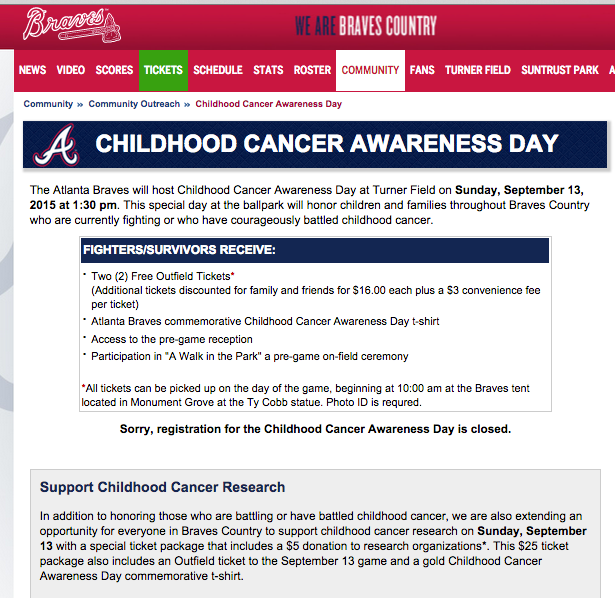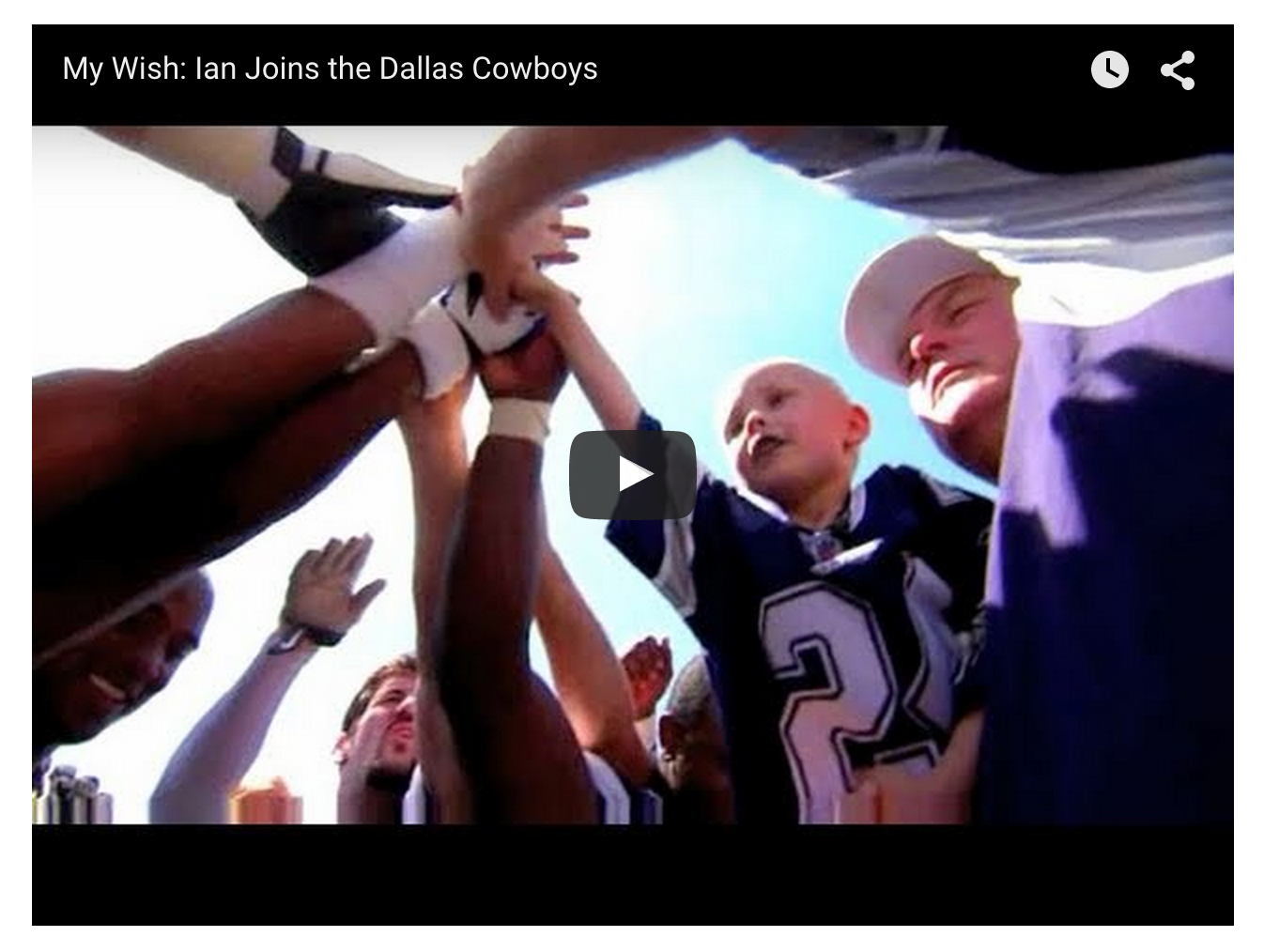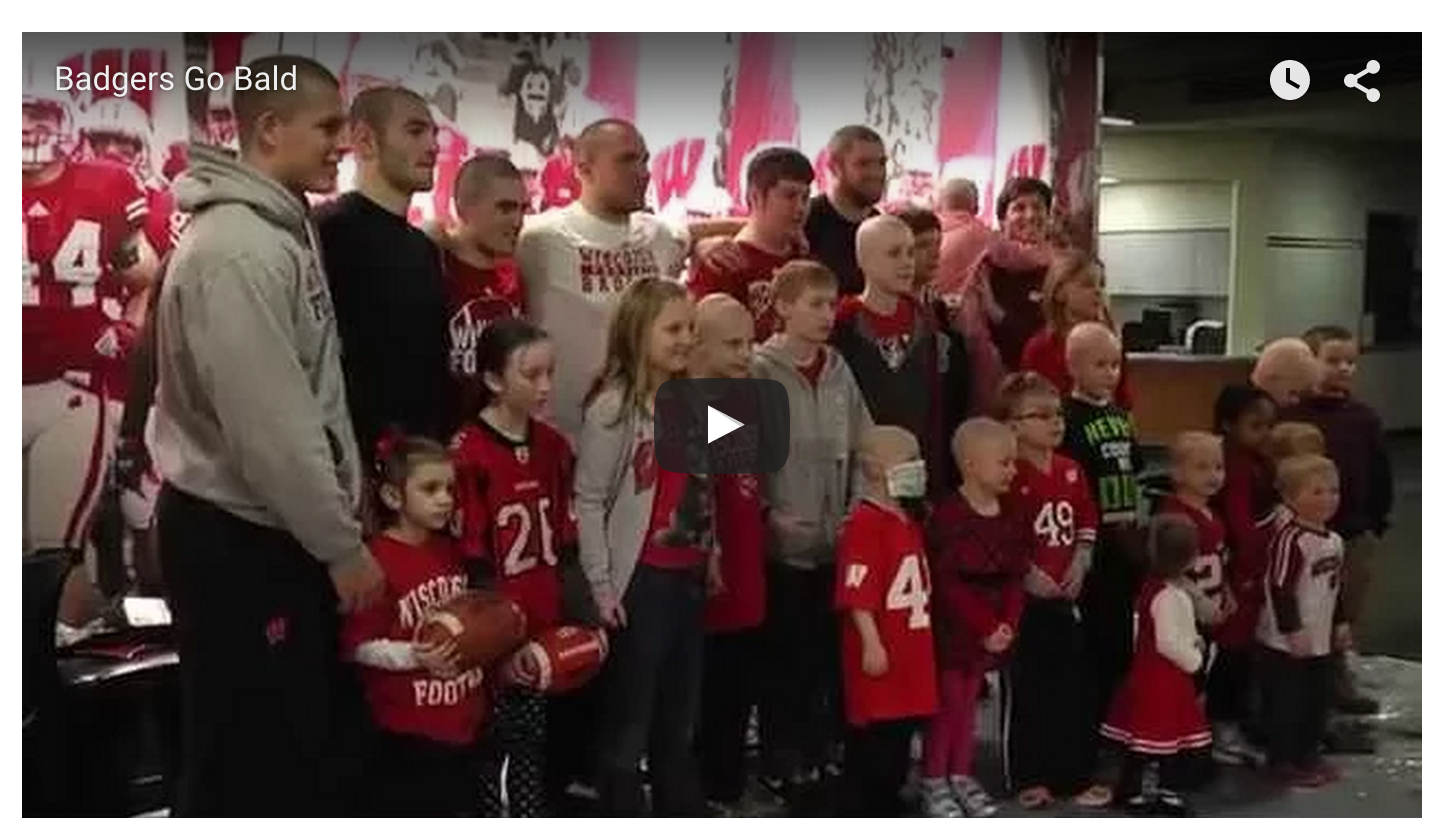In the many conversations we’ve had with former student-athletes and community coordinators across the country, we’ve gathered that student-athletes are most passionate about interacting with children who are suffering from serious illness, especially childhood cancer. We’d venture to assume your student-athletes feel the same.
Since September is Childhood Cancer Awareness Month, we wanted to share a few facts about childhood cancer and a few ways you can get involved and help your athletes give back.
First, the facts:
CHILDHOOD CANCER FACTS (from the American Cancer Society):
- About 1,250 children younger than 15 years old are expected to die from cancer in 2015.
- Cancer is the second leading cause of death in children (after accidents).
- About 10,380 children in the United States under the age of 15 will be diagnosed with cancer in 2015.
- Childhood cancer rates have been rising slightly for the past few decades.
- Because of major treatment advances in recent decades, more than 80% of children with cancer now survive 5 years or more. Overall, this is a huge increase since the mid-1970s, when the 5-year survival rate was about 58%. Still, survival rates vary depending on the type of cancer and other factors.

How you can help:
As an athletic department, we have a unique platform from which to raise awareness and provide memorable experiences for patients and their families. The list below is meant to simply serve as inspiration. Each experience, awareness game or head shaving could and should be tweaked to serve your team and your unique connection to the disease.
Do you have a student-athlete who knows someone suffering from childhood cancer? Why not have that relative serve as honorary captain?
Is there a children’s hospital you visit regularly that treats childhood cancer patients? Why not collaborate with them on an experience?
The possibilities to make an impact are endless.
- Host a child for a memorable experience
Welcoming a child to the team is perhaps the most visible, and memorable, way to raise awareness for childhood cancer. In the video above, the Dallas Cowboys made Ian, a 6-year-old T-Cell Lymphoma survivor, a member of the team, complete with jersey, a turn on team drills and catch with his favorite player, Marion Barber.
Hosting a patient for a memorable experience with the team is also the most impactful from the student-athlete perspective. It allows the student-athlete to interact with the child and experience his or her struggle first-hand. Many student-athletes may choose to stay in touch with the child and his or her family or become more involved in helping children facing serious illness or disease.
2. Shave your heads to raise awareness
Shaving your head requires a high-level of commitment, but it’s certainly a worthy endeavor if your student-athletes are on-board. The Wisconsin Football team started shaving its heads two years ago after a former alumni and pediatric cancer resident brought the idea forward. The team partnered with the local children’s hospital they visit on a regular basis, The American Family Children’s Hospital, to identify childhood cancer patients interested in visiting the stadium to shave a player’s head.
The patients were treated to a tour of the stadium, pizza party and free memorabilia in addition to their turn as a “shaver.”
In our social media-driven environment, it’s a huge vehicle for awareness. Fans love to see images of their favorite players without hair and videos shared in real-time of the process.
For the families and patients, it was an impactful reminder that they are not alone in their fight against cancer. Many of the children had large smiles on their faces as they made the players look “just like them.”
3. Host an awareness game and donate the proceeds

Fans appreciate the opportunity to give back to causes they care about while enjoying the sport they love. Awareness games are also an opportunity to raise money for a childhood cancer-related charity by donating the proceeds from the game. The Atlanta Braves took it a step further by providing free tickets to childhood cancer survivors and their families and recognizing them in an on-field ceremony.
4. Incorporate gold to your team attire

We’re all familiar with the “pink” game for breast cancer awareness, why not switch it up and include gold instead? Allow the team to incorporate gold in their game attire and produce related retail products to sell to fans with all proceeds benefitting a childhood cancer-related charity.



